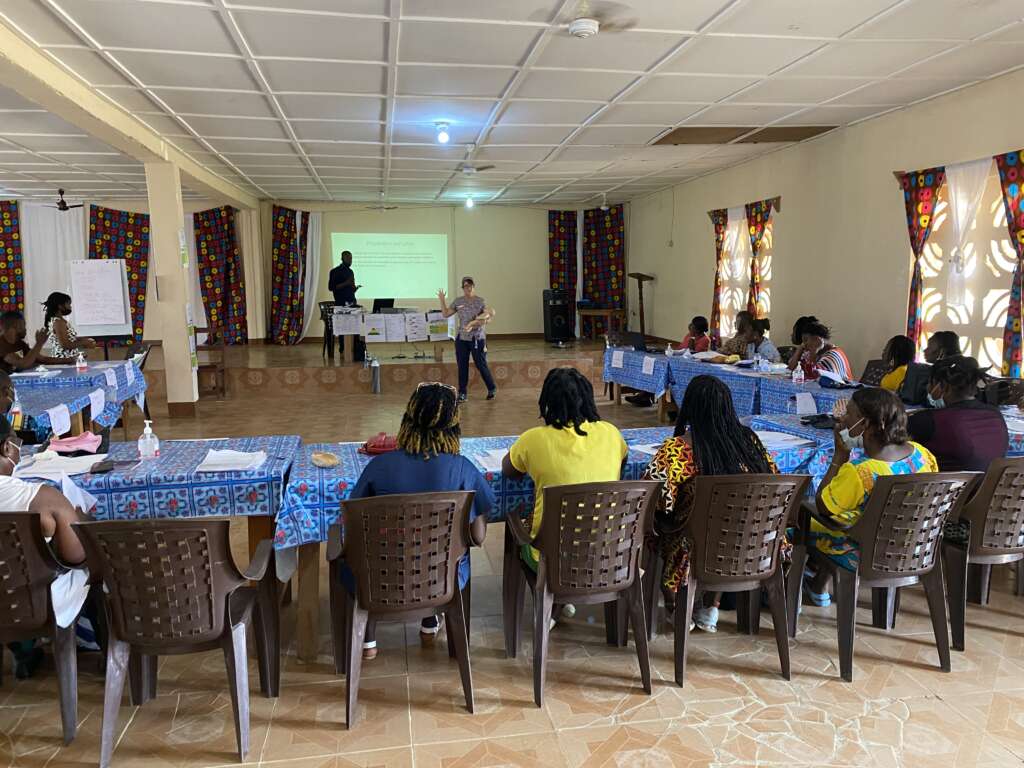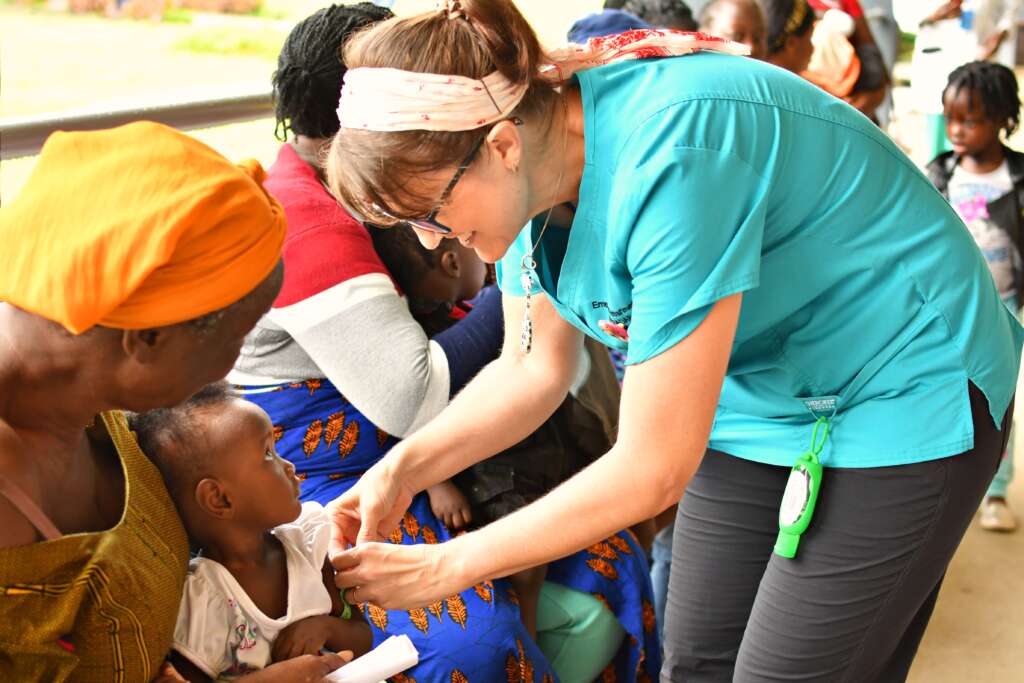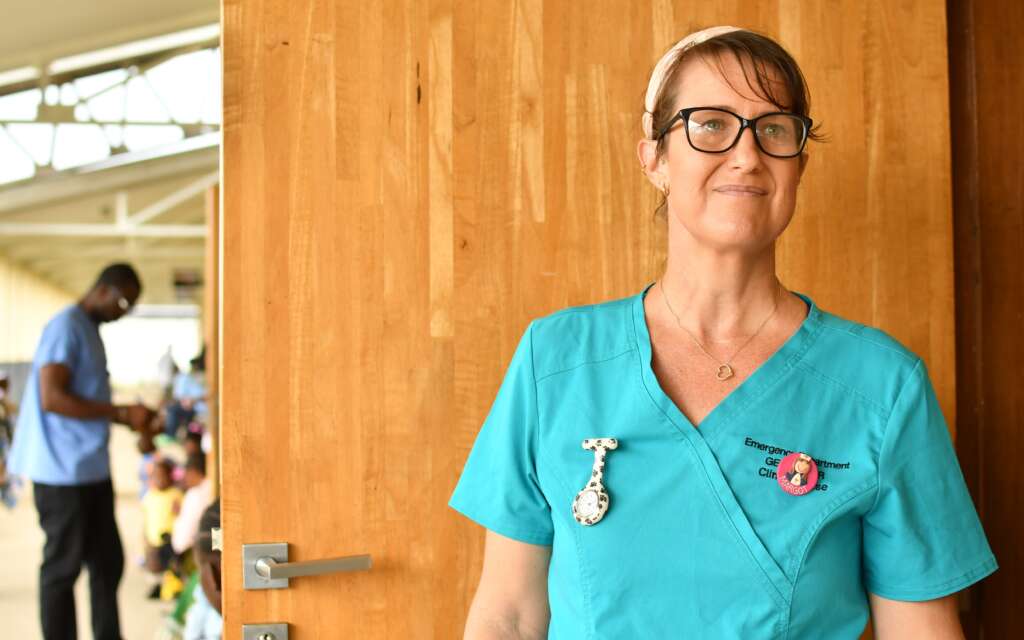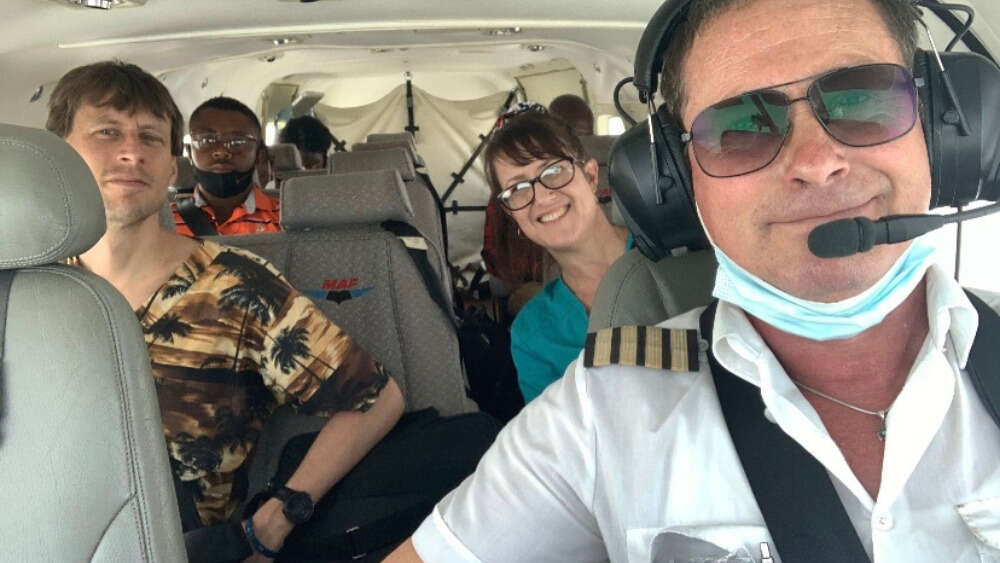After having served with Mission Aviation Fellowship (MAF) for four years in Arnhem Land and southern Africa when their children were young, Steven and Margot Biggs felt God’s call back to the mission field some years later. In 2019 they began serving with MAF again. This time they went to Liberia in West Africa, with Steven serving as a pilot and Margot utilising her extensive nursing experience in service to God.
I recently took some time out of my normal schedule volunteering as a nurse at a mission hospital in Monrovia, Liberia, to travel with my colleague Dr Mikey to spend a week teaching an Emergency Triage Assessment and Treatment (ETAT) course. We were passengers on one of the regular shuttle flights to Harper in the far southeast of the country.
We met up with a team from Partners In Health (PIH), an NGO based in Harper. They provided six people to be facilitators with us: two doctors, four nurses and an administrator. They’ve never run the course before, but they were really good. Now we’ve done it with them, they’re equipped to do it themselves. The more people that can participate in the course the better, because it has really good outcomes in the clinical setting.

Margot conducts a course for healthcare workers in Liberia
Because of the limited weight allowance on the plane, Mikey and I carried a few pieces of the equipment necessary to deliver the training, but PIH provided most of the kit for the practical sessions and all the paperwork. Twenty-five clinicians – mostly from the J.J. Dossen Hospital in Harper and Pleebo Health Centre, a few kilometres away – spent four days learning new skills and putting them into practice in different scenarios.
They were mostly nurses and some were physicians’ assistants. We assume everyone has a basic foundation of reading and mathematics, and at the beginning they do a pre-test to assess their starting level. Generally people score quite badly; almost no one passes the pre-test. At the end of the course they do the same test again and most of the participants pass. Even for those who don’t, we always see a massive difference between the pre- and the post-test. They have still increased their knowledge.
Even though I have led the course many times, I still love it. I just love to see those light-bulb moments, that sense of someone not knowing something before and now they do know it. And I love the group sessions where we do practical work because we can really get our hands in and the participants can ask questions. They feel much freer to interact with us and be a bit more open with their questions.

Margot checks a child for signs of malnutrition at an under-5s clinic in Liberia
The facilitators can all lead any of the sessions, and they share the work out differently each time. I do, however, have some subject areas that I particularly favour. Because my background is in Emergency Nursing, I love teaching basic life support, and about coma and convulsions. I like teaching the things I’ve had lots of experience in because you can add in your own personal stories and talk about real-life situations.
There are plenty of challenges in running the course, especially with technology. We like to use our projector but the electricity often turns on and off, so that can be frustrating. The other thing is there can be quite a big difference between the levels of knowledge of the participants. Some people will come on the course already quite good at their job, but others have much less experience or prior knowledge and so it can be difficult know where to pitch the level of teaching.
Nonetheless, I am in no doubt that the course has value for all who attend, having a positive impact on their practice, which, in turn, can save lives. This is particularly true for staff who work on their own in remote settings. Those workers are even less resourced, so the more they know, the more hope they’ve got. In a city like Monrovia (Liberia’s capital), even if you don’t know this stuff, there’s a good chance someone in the next chair might know it. But in more remote settings, you could be one nurse in one clinic and when someone turns up with a severely malnourished or dehydrated child, or with a child not breathing or having a seizure, it’s down to you alone. So I really like the idea of taking the training out to more remote places.

Margot Biggs
Because of the very poor state of many roads in Liberia, MAF is a vital partner in making the training available, especially in hard-to-reach parts of the country. I’m incredibly grateful that we were able to fly with MAF because that was the only way we could have done it. It would have been even better if my husband, MAF pilot Steven, was the one flying us, but unfortunately he had a scheduling clash. Dr Mikey also only had a certain amount of time and it would have been a two-day trip by road. I know that people often say “we couldn’t do what we’re doing with MAF”, and I experienced that first-hand.
Looking to the future, we aim to get 100 participants through the course every year. It is a privilege to be involved in helping them reach their goal, knowing the good outcomes this will bring for the health of the Liberian people.
Email This Story
Why not send this to a friend?


